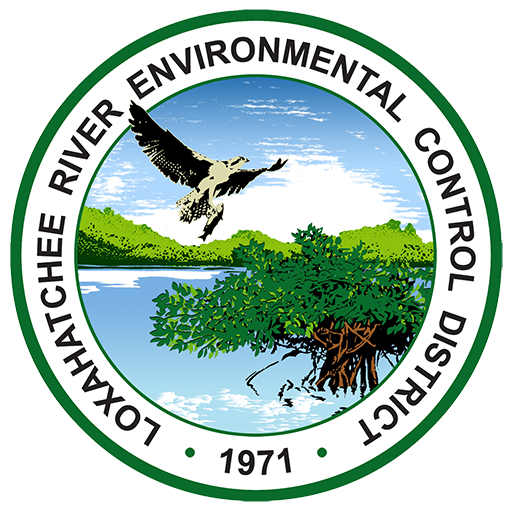Introduction to the District
The Loxahatchee River Environmental Control District (District) is an agency of government which was created in 1971 for the purpose of providing utility and other environmental services within the 72 square mile basin of the Loxahatchee River. Currently, the District owns, operates and regulates the regional wastewater system serving Tequesta, Jupiter, Juno Beach and the unincorporated areas of northern Palm Beach and southern Martin counties (See Maps).
The District is governed by a five member elected Board which meets monthly to discuss business at hand and set policy. This policy, in turn, is implemented by the Executive Director and his Administrative, Engineering, and Legal staff.
The District offices and plant facility are located at 2500 Jupiter Park Drive, Jupiter, Florida. The offices are open between 8:30 AM and 5:00 PM weekdays. The telephone number is (561) 747-5700. For emergency situations outside of normal working hours, the telephone number Is (561) 747-5708.
With specific regard to new development, the District’s legislated policy is to provide the required utility services to the area now and as it continues to grow. It is, therefore, the agency’s intent to work closely with new development to assure that the utility services can be provided in a manner which is both timely and consistent with the standards and specifications of the District.
For Development Guidelines, refer to Section 10 of the District’s Manual of Minimum Construction Standards and Technical Specifications
Engineering Plan Review Checklist: For an outline of submittal requirements, please refer to the Engineering Plan Review Checklist
Please contact our Engineering department at (561) 747-5700, Option 3 or email: engineering@lrecd.org if you have any questions. We look forward to serving you!
